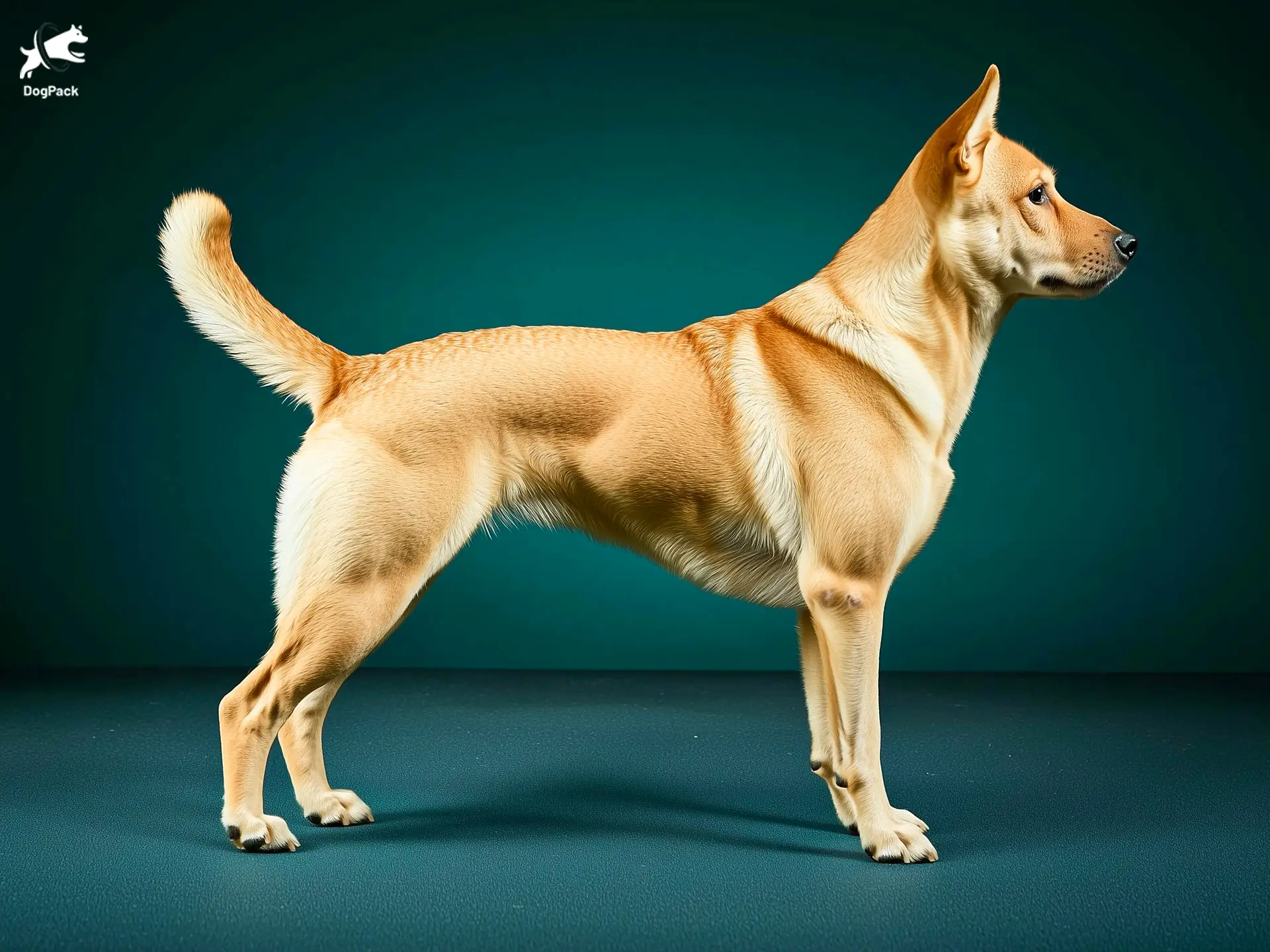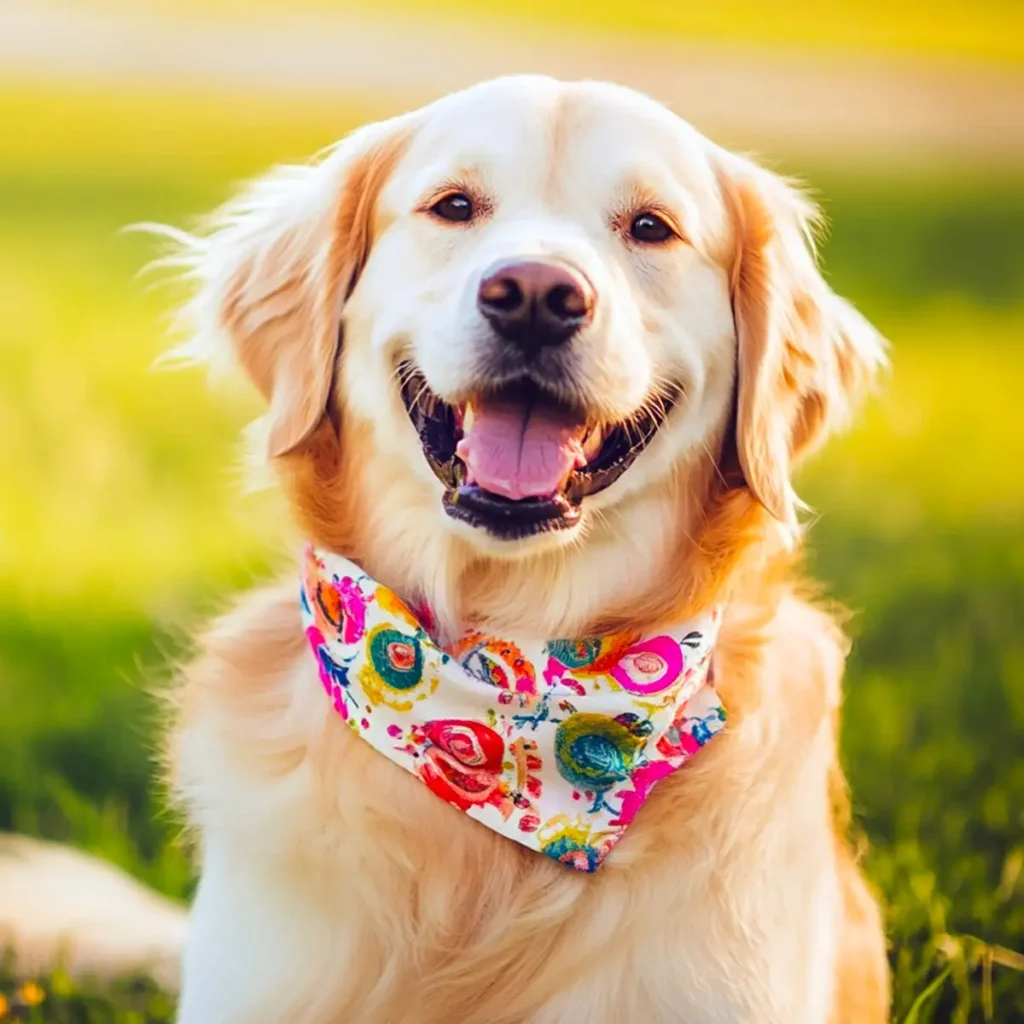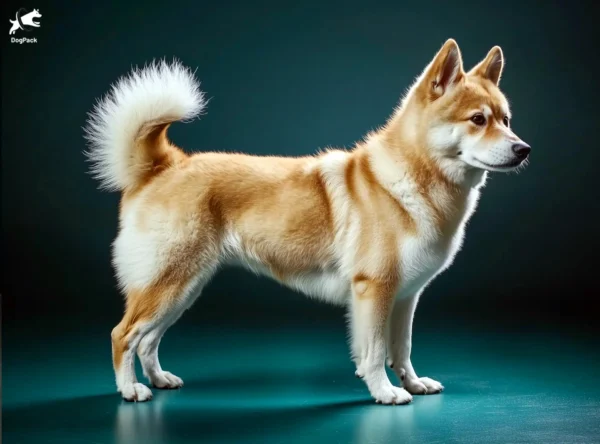Nureongi Breed Info & Overview
Ever met a dog with a name that sounds like a noodle dish? The Nureongi, sometimes called the Korean Yellow Dog, is no culinary delight but a medium‑size spitz with a big heart. Bred on Korean farms for work and companionship, this yellow‑coated dog is known for loyalty, intelligence and a protective streak. Whether guarding livestock or cuddling on the couch, the Nureongi thrives when treated like part of the family.
Characteristics
Pictures
Breed History
The Nureongi’s story reaches back centuries. Historical records suggest that these “yellow ones” were present in Korea as early as the 1st century AD. Farmers valued them for hunting, guarding and general farm work. Their ability to thrive in Korea’s rugged landscape is a testament to the breed’s resilience and adaptability.
Over time, the breed’s name became synonymous with its golden coat; “Nureongi” literally translates to “yellow dog.” Their sturdy frame, shorter legs, and occasional melanistic facial mask distinguish them from the more famous Jindo. This variation likely arose because they developed as a landrace without a formal breeding standard.
In recent history, the breed’s reputation suffered due to its association with the dog meat trade. As a result, these dogs are rarely found as pets in Korea. However, increased awareness of animal welfare and pride in Korean heritage have sparked renewed interest in preserving this traditional farm dog for companionship rather than consumption.
Temperament, Personality
Describing a Nureongi’s personality feels like introducing a loyal old friend. These dogs are famously devoted to their families and form deep bonds with their humans. They’re playful and love to engage in games, yet they’re calm enough to lounge quietly by your feet when the day winds down. Early socialisation helps channel their protective instincts so they welcome visitors rather than act like bouncers at a club.
Expect an occasional conversation with your Nureongi. They’re known to be vocal and may bark or “talk” when excited. Unlike some breeds, this chatty nature isn’t aggression; it’s their way of sharing feelings. Give them clear boundaries and a job to do—herding children counts—and they’ll be content. Their intelligence means they pick up commands quickly, but don’t be surprised if a stubborn streak emerges; positive reinforcement works better than stern lectures.
In a family setting, Nureongi dogs are gentle and patient. They tend to be tolerant with kids and generally get along with other pets if introduced properly. Their protective side may appear when strangers approach, but proper training teaches them when to relax. Because of their strong bonds, they dislike being left alone for long periods. Provide companionship and mental stimulation, and you’ll have a happy, loyal sidekick.
Physical Characteristics
The first thing you notice about a Nureongi is its yellow coat, ranging from pale cream to deep gold. Some dogs have a darker mask on the face, giving them an almost fox‑like appearance. The coat itself is short and dense, made up of a protective double layer that keeps the dog warm on cold mornings and sheds lightly throughout the year. A quick brush once a week keeps it looking neat.
This is a medium‑sized dog standing 18–24 inches (46–61 cm) and weighing 33–55 pounds (15–25 kg). The body is sturdy and rectangular with a broad chest and muscular shoulders. Erect, triangular ears sit high on the head and point forward, always on alert. The tail typically curls slightly over the back, a hallmark of spitz‑type breeds. Their legs are slightly shorter compared with the Jindo, giving the Nureongi a solid, grounded stance.
Those expressive eyes are almond‑shaped and dark, conveying curiosity and intelligence. The overall impression is of a dog built for work but softened by a gentle face and a wagging tail. You can’t help but smile when a Nureongi tilts its head and gives you a quizzical look, as if asking if it’s time for another adventure.
Health Issues
Although generally robust, the Nureongi can be prone to certain health conditions. Hip dysplasia—a genetic disorder where the hip joints are loose—may appear in some lines. According to veterinary experts, this condition arises from hereditary and environmental factors and leads to cartilage wear, arthritis and limited mobility. Signs include lameness, difficulty rising and “bunny hopping” upstairs. Regular hip evaluations and maintaining a healthy weight are vital to managing this risk.
Skin allergies are another concern. These can cause itching, redness and hair loss. Common triggers include environmental allergens, fleas or certain foods. Vets often diagnose allergies through skin tests and may prescribe antihistamines or special shampoos. Owners should monitor for symptoms and adjust diets or grooming routines as needed.
Other minor issues include obesity (if overfed and under‑exercised), ear infections due to their upright ears, and dental problems if oral hygiene is ignored. Routine veterinary check‑ups, vaccinations and parasite prevention help catch problems early. When sourcing a puppy, choose a reputable breeder or rescue that screens for genetic issues and offers transparency about the dog’s lineage.
Grooming Needs
Owning a Nureongi won’t make you a regular at the dog salon, but some maintenance is essential. Their short, dense coat sheds moderately and benefits from weekly brushing to remove loose hair and dirt. During seasonal shedding, brushing more frequently reduces the amount of golden fur on your furniture. Bathing is only necessary every couple of months or when your dog rolls in something questionable—a favourite pastime if mud is involved.
Nails grow quickly and should be trimmed every two weeks to prevent discomfort. Clean the ears regularly and check for signs of infection; upright ears catch debris but also allow good airflow, so problems are usually minimal. Dental care is often overlooked, so brush those teeth several times a week and offer dental chews to keep breath fresh.
Because the Nureongi’s coat repels dirt well, many owners joke that grooming time is when the dog gets more massage than bath. This short routine can become a bonding experience—perfect for such an affectionate breed. If allergies are a concern, choose hypoallergenic shampoos and consult your vet before trying new products.
Exercise Requirements
Built for work, the Nureongi isn’t content with a quick stroll around the block. They need around an hour of physical activity every day. Divide this into brisk walks, play sessions and off‑leash time in a safe area. Fetch, agility courses and puzzle toys keep both body and mind busy. Puppies require shorter bursts of play to protect developing joints, while seniors enjoy gentler walks.
Without enough exercise, a Nureongi’s pent‑up energy can lead to destructive behaviours like chewing or digging. Consider enrolling them in dog sports or teaching them tasks around the house—anything that taps into their working heritage. Even teaching them to bring in the mail can make them beam with pride.
City dwellers can keep a Nureongi happy by committing to daily park visits or long urban hikes. Despite their farm‑dog origins, they adapt well to apartments as long as their exercise needs are met. After an energetic play session, expect your four‑legged friend to curl up beside you and snore contentedly.
Training Tips
Training a Nureongi is like teaching a bright student who occasionally prefers recess. They’re eager learners but have an independent streak that requires patience. Use positive reinforcement—treats, praise and play—to motivate them. Harsh corrections can backfire, making them dig in their paws. Short, varied sessions keep them engaged and prevent boredom.
Early socialisation is crucial. Introduce your puppy to different people, dogs and environments to prevent territorial behaviour. They may be naturally wary of strangers, so showing them that guests are friends helps reduce barking. Obedience classes can offer structured training and social opportunities, and agility classes tap into their athleticism and problem‑solving abilities.
Because of their heritage, many Nureongi enjoy having a job. Teach them to carry a backpack on hikes or to perform tricks that challenge their minds. Puzzle toys and scent games prevent mischief. Remember: consistency is key. If you sometimes allow them on the couch and sometimes don’t, they’ll be confused—and will probably choose the couch.
Nutrition, Diet
Feeding a Nureongi isn’t just about filling a bowl; it’s about supporting a working dog’s active lifestyle. Adults typically eat 2–3 cups of high‑quality food per day, split into two meals. Puppies need three smaller meals until they mature. Choose a diet rich in lean protein to maintain muscle and provide the energy necessary for play and work.
These dogs may benefit from grain‑free or limited‑ingredient diets if prone to food sensitivities. Watch for signs of allergies such as itchy skin or gastrointestinal upset and consult your vet before making drastic changes. Because Nureongis love to eat, measure portions carefully and adjust based on age, activity level and metabolism. Overfeeding can lead to weight gain, putting extra stress on their joints, which could exacerbate hip dysplasia.
Fresh water should always be available, and occasional healthy treats—think carrot sticks or small pieces of cooked chicken—can be used for training. Avoid feeding table scraps high in fat or seasoning, as these can upset sensitive stomachs. Regular check‑ups with your veterinarian help tailor a diet plan to your dog’s individual needs.
Adoption, Breeders
Finding a Nureongi puppy is not as simple as contacting the nearest breeder. Because this is a landrace rather than a standardized breed and because of its association with the dog meat trade, ethical breeders are rare. In fact, many Nureongi dogs available for adoption have been rescued from farms. Organisations like Free Korean Dogs and Korean K9 Rescue specialise in saving these dogs and placing them in homes abroad, including Canada and the US.
If you do find a breeder, ensure they perform health screenings for hip dysplasia and other genetic issues. Ask to see medical records, meet the puppy’s parents and visit the breeding facility to ensure dogs are raised in humane conditions. Because Nureongi dogs are not recognised by major kennel clubs, there are no official breed clubs; most enthusiasts share information through rescue organisations and online forums.
Adopting a rescue Nureongi can be deeply rewarding. Many dogs adapt quickly to domestic life despite rough starts. Work with rescue coordinators to understand each dog’s temperament and needs, and be prepared to invest time in training and socialisation. You’ll be giving a second chance to a deserving animal and helping to change perceptions of this historic Korean dog.
Family Pet?
Despite their rugged beginnings, Nureongi dogs shine as family companions. They’re patient with children and often enjoy following them around the yard like furry babysitters. Teach kids to respect the dog’s space, and supervise interactions, especially with younger children. Because of their protective instincts, Nureongis may place themselves between kids and perceived dangers—a comforting sight for parents.
With other pets, introductions should be gradual. Properly socialised Nureongi dogs generally coexist peacefully with cats and other dogs, although a high prey drive can manifest as chasing smaller animals. Early training to discourage chasing and plenty of outlets for their energy help maintain harmony. If you already have pets, consider adopting a Nureongi that has been fostered with other animals and has known compatibility.
These dogs are happiest when they’re part of daily family life. They’ll join you on hikes, watch movies at your feet and happily greet you at the door. Leaving them alone for long stretches can lead to anxiety or boredom, so families that work long hours should provide dog walkers, daycare or consider another breed that tolerates solitude better.
Right For You?
Choosing a Nureongi means embracing an active lifestyle and committing to training. They suit owners who enjoy outdoor activities and have time to meet their exercise needs. If jogging in the rain and spending Saturday mornings at the dog park appeals to you, this breed may be a great match. However, if your idea of a pet is a couch potato that can be left alone all day, look elsewhere.
First‑time dog owners can succeed with a Nureongi if they’re willing to invest in training classes and ongoing socialisation. Their intelligence and occasional stubbornness may challenge novices, but positive reinforcement techniques work well. A secure yard or access to green space is a plus, though apartment dwellers can manage with daily walks and mental stimulation.
Finally, consider the emotional aspect: adopting a Nureongi often means rescuing a dog from difficult circumstances. If you’re drawn to the idea of providing a loving home to a deserving animal and sharing your life with a loyal, playful companion, the Nureongi could be the perfect addition to your family.
Conclusion
The Nureongi may not feature on kennel club lists, but this golden‑coated farm dog has a rich history and a heart full of devotion. Bred as a working companion in Korea’s rural landscapes, the breed balances loyalty, intelligence and playfulness. With proper training, regular exercise and lots of affection, a Nureongi becomes a steadfast family member who will happily follow you from hiking trails to sofa snuggles. Adopting one often means giving a second chance to a dog rescued from the meat trade, making your bond even more meaningful. If you’re ready for an active, affectionate partner and are committed to responsible ownership, the Nureongi might just be your perfect match.
FAQs
-
What is a Nureongi dog and how is it different from Jindos?
The Nureongi is a traditional Korean village dog known for its yellow coat and working-dog temperament. Unlike the more famous Jindo, which is a standardized breed, Nureongis are landrace dogs with more genetic diversity and are not formally recognized by major registries.
-
Why were Nureongi dogs historically raised on Korean farms?
Historically, Nureongis were kept on rural Korean farms as multipurpose dogs—for guarding, herding, and even as a meat source in some regions. Their adaptability, resilience, and low-maintenance nature made them ideal for life in village settings across Korea.
-
Is the Nureongi officially recognized as a breed today?
No, the Nureongi is not recognized by the AKC, FCI, or other major kennel clubs. It’s considered a landrace type, not a standardized breed. However, conservation efforts are growing to preserve its unique genetics and cultural significance in Korea.
-
Can Nureongis make good family dogs if adopted abroad?
Yes, with proper socialization, Nureongis can become loyal and affectionate companions. Many adopted Nureongis thrive in family homes abroad, though they may retain an independent streak and prefer structure, patience, and outdoor time over being lapdogs.
-
Are there rescue organizations that specialize in Nureongi dogs?
Yes, groups like Korean K9 Rescue and Free Korean Dogs work to rescue and rehome Nureongi dogs internationally. These organizations aim to shift public perception by showing how adaptable and loving these dogs can be outside their traditional roles.
Breed Ratings
The Nureongi grasps commands quickly and enjoys learning tasks, but occasional stubbornness requires patient training.
This breed loves games and will happily chase balls or invent its own toys, making playtime a joyful part of your day.
Active by nature, a Nureongi thrives on daily exercise and mental stimulation; long naps follow intense play.
Moderate shedding year‑round means weekly brushing keeps fur tumbleweeds to a minimum.
A moderate prey drive can lead to chasing small animals; early training helps channel this instinct.
Short coats and minimal bathing needs make grooming straightforward, though nails and ears require attention.
Intelligent yet independent, they respond best to positive reinforcement and consistent, varied sessions.
These dogs bond closely with their humans and may develop anxiety if left alone for long periods.
Naturally vocal, they bark when excited or alert but aren’t persistent barkers.
Not big droolers, though panting after exercise might leave a little slobber.
When socialised, Nureongis usually enjoy canine company and play well with others.
Generally hardy, but watch for hip dysplasia and skin allergies; regular vet care is essential.













